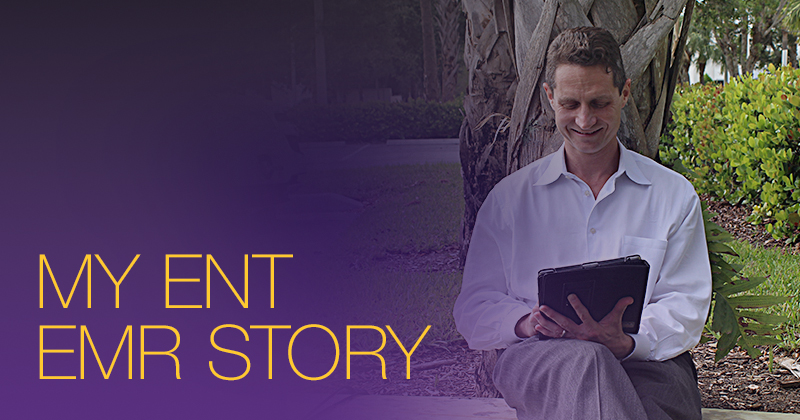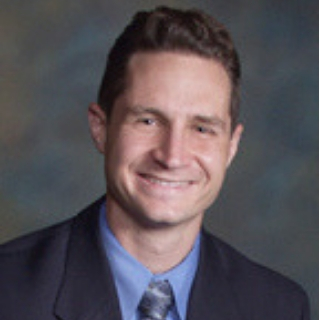Trading Epistaxis and Airway Obstruction for Treating Syntax Errors and Procedure Notes

One Physician’s Experience Culminates in an Otolaryngology EMR System
This post was originally published on September 18, 2014 and updated on April 4, 2019.
“Cut! Too short! Too long!” Those words still elicit some anxiety, reminding me of my days as a medical student and a surgical intern. Nonetheless, after residency and a career performing major head and neck and endoscopic operations, I never would have guessed that “cut,” “too short” and “too long” would apply to sitting at a desk writing and editing computer code—more than two million lines of it. When I first started at Modernizing Medicine® as medical director of EMA™ for Otolaryngology (I am now the senior medical director of otolaryngology), I didn’t know how to write code, but I quickly came to realize that my training as a surgeon—find a problem, diagnose it and fix it, safely and efficiently—would serve me as well in an office as it did in the OR.
On the Brink of a New Otolaryngology EMR
I started working at Modernizing Medicine because I was disappointed with both of my previous electronic medical record (EMR) systems. I could think and practice with a surgical mindset in the OR, but was flummoxed in the office. My prior systems slowed me down, didn’t follow a logical flow and didn’t document in a detailed and accurate way. In other words, it was the antithesis of surgical style.
Coding ENT Software
While sitting down in front of a blank computer screen and tasked with coding the ENT software that I had envisioned, my surgical mindset turned on. I saw a problem and wanted to fix it—cut, cure and reconstruct. Learning to code initially harkened back to my first days in the OR. “There’s a plane when doing a tonsillectomy?” “I know the jugular is somewhere around here…” “The eye and brain are how close to the ethmoids?”
Feeling once again like a new resident full of anticipation (although better rested and groomed), I used that all too familiar feeling to learn ENT software coding to build a system designed specifically for otolaryngologists.
An Intuitive ENT EMR
Early in residency, for better or worse, I earned the epithet of “the ant.” Initially, the term came from a joke that despite my slight frame, I am a competitive athlete, and like an ant I can lift substantial weight in comparison to stature. Soon, the nickname applied to my work ethic. By taking the clinical workload on my back, I do whatever it takes – no matter how difficult or tedious – to take care of patients and be the best surgeon I can.
As my excitement grew for creating EMA, Modernizing Medicine’s otolaryngology EMR, the “ant” mentality resurfaced. Several months of coding resulted in an evolution of programming complexity: tubes to tympanoplasties, maxillaries to frontals, lymph node biopsies to neck dissections. The result? An elegant and intuitive ENT workflow that defines the system. As I started to use EMA in my busy surgical practice, I devised ways to make this otolaryngology EMR system more intuitive, faster and more detailed.
A Growing Presence in Otolaryngology
We’ve come a very long way since the unveiling of EMA for otolaryngology to fellow surgeons at the Vancouver AAO-HNS Annual Meeting in 2013, where we signed our first beta users. The beta process involved working with other ENTs who had various practice patterns and styles, and EMA now addresses and automatically adapts to unique practice characteristics due to the EMR’s adaptive learning engine.
As a software developer, “cut,” “too short,” and “too long” crept back into my daily lexicon, and I traded epistaxis and airway obstruction for treating syntax errors, procedure notes, exam descriptors and CPT coding. Tenets of a good surgical practice have been applied to software development: timely response, thoughtful analysis to diagnose problems or consider requests for changes and additions, plus implementation of rapid and detailed fixes.
Today, Modernizing Medicine not only offers an award-winning ENT EMR*, but additionally has a suite of ENT software solutions that include Practice Management, Analytics, Revenue Cycle Management and patient engagement tools.
Right out of the box our ENT EMR provides an otolaryngologist with 1,300 chief complaints; 4,700 ENT diagnoses and 140,000 ICD-10 diagnoses; along with 2,050 treatment plans and procedures.
Times have changed and Modernizing Medicine has stayed ahead of many of these changes. One topic that comes to mind is the industry trend of value-based care. Our ENT EMR captures structured data at the point of care and has a built-in MIPS solution that collects needed MIPS data during an exam, while allowing physicians to compare performance with peers and submit data to CMS through our MIPS CQM. This is just one of the many examples of continued innovation to meet the demands of both the industry as well as our current and future client base.
Helping Shape the Future of Medicine
Before working for Modernizing Medicine, I felt as if the health IT needs of ENTs had previously been neglected while health tech in general had advanced. However, Modernizing Medicine’s radical model of the “physician-coder” working side-by-side with a team of seasoned software developers differentiates it from other ENT EMR systems. The result is otolaryngology software that helps make workdays easier for practicing otolaryngologists.
If I “cut” time from the bureaucratic side of medicine and reduce the frustration of it taking “too long” to complete notes at the end of the day, I will no longer jump when hearing those words, and I’ll appreciate making days “too short” for fellow surgeons.
*2019 Black Book™ Research
